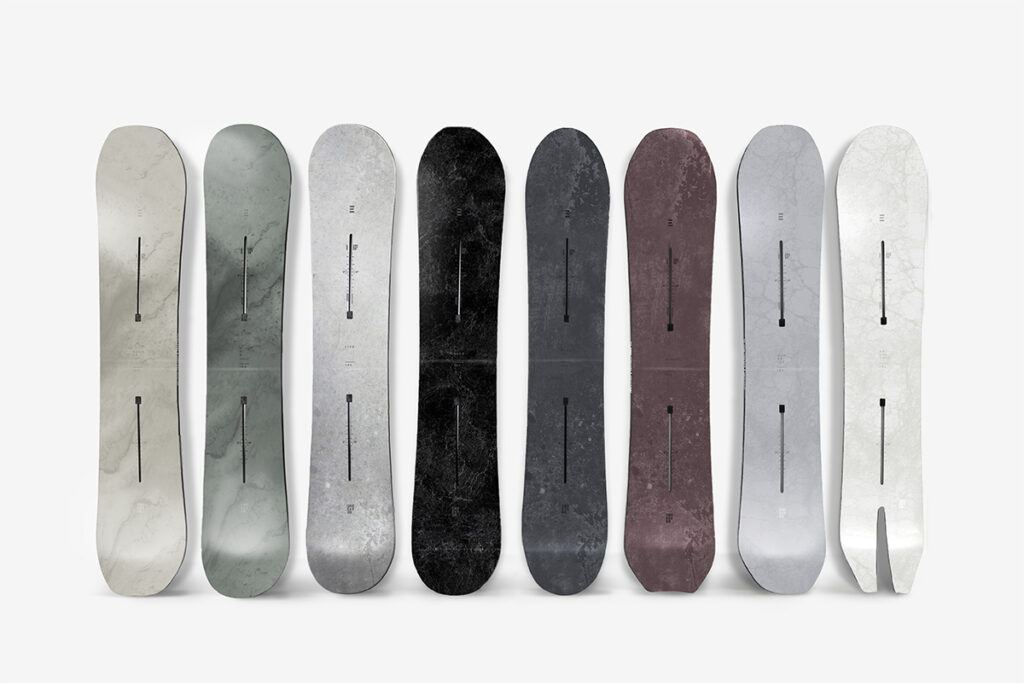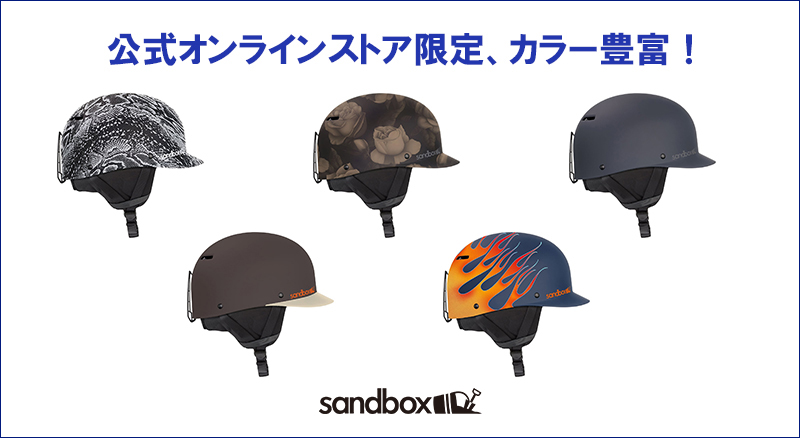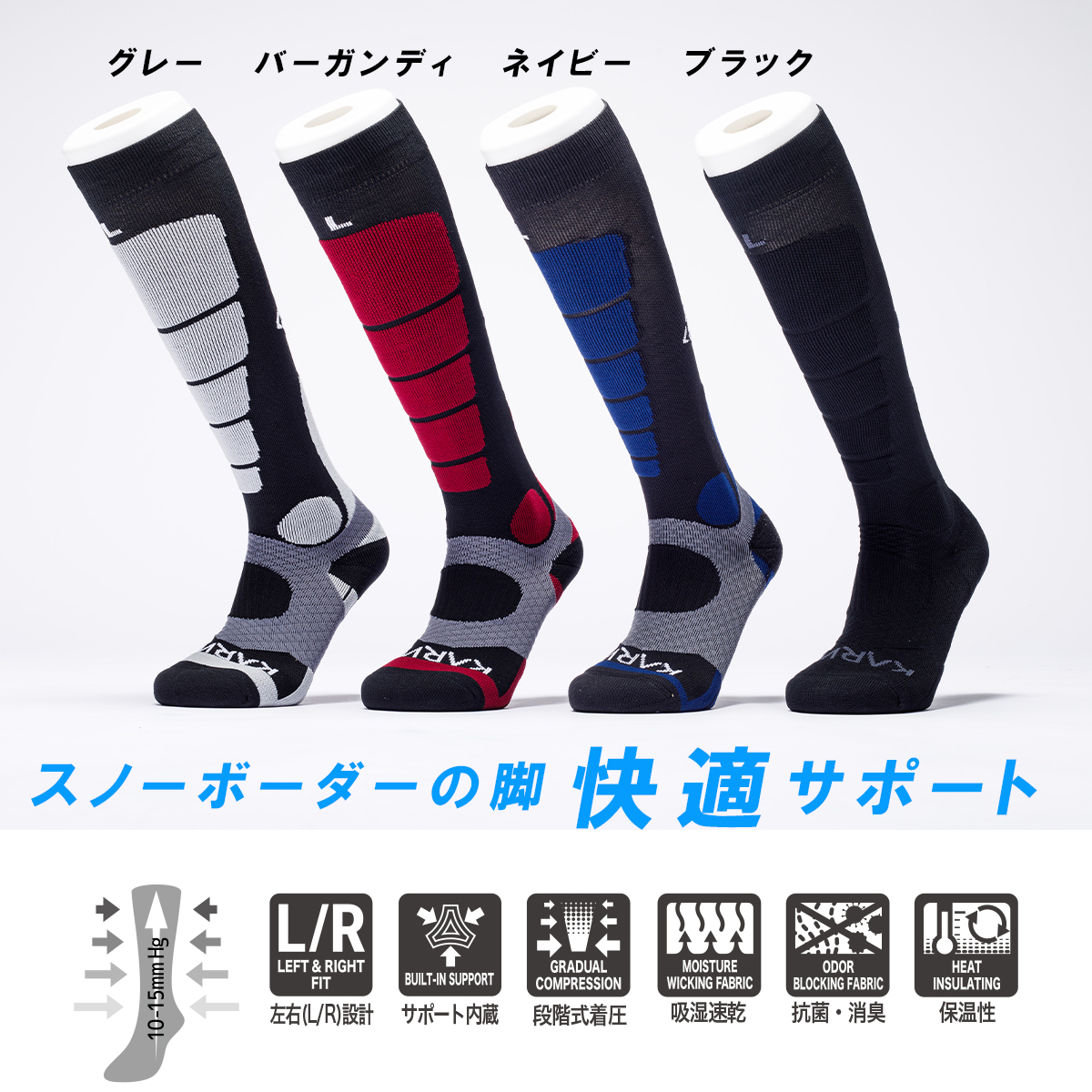
Choosing a snowboard is the most exciting thing to do!
Unlike rental boards, snowboarding with your own snowboard gives you a different level of motivation. Throughout my years as an instructor I have seen that snowboard beginners with their own boards are much more motivated than those with rentals.
Some of you may not know what to buy as there are too many options. If this is true, then you’ve come to the right place.
Let’s introduce how to choose a snowboard from five perspectives.
目次
5 board selection factors
There are five major factors for selecting boards.
① Length (long or short)
② Width (whether wide or narrow)
③ Weight (heavy or light)
④ Flexibility (stiff or soft)
⑤ Shape (directional, twin, camber, locker, etc.)
What is the proper snowboard length?
When choosing your board, try to picture which length will suit yourself best. You can do this by imagining different scenarios.
First of all, imagine you are on a board that is taller than you.
Going into turns will be difficult to handle. It is very tricky to go through narrow trails, but the speed and stability is like no other.
Now imagine a short board, like a skateboard.
It seems to be easy to control, but on your turns your board can’t handle the weight and starts skidding.
If you have a really small board, it will make turning much easier; however, the board will not be stable at high speeds and it’s harder to put the edge of the snowboard into the snow causing you to slide around more.
There are various factors involved in determining the right length of board for you; including the shape, stiffness, and strength. So although I can say that a boards height ranging from your jaw to your nose is ideal, we can’t forget there are always other aspects to put into consideration.
If your snowboards height is above your lips, it will be a little more challenging to handle, but it has excellent stability. If your snowboards height is beneath your lips, it will be easier to control, but has less stability at high speeds.
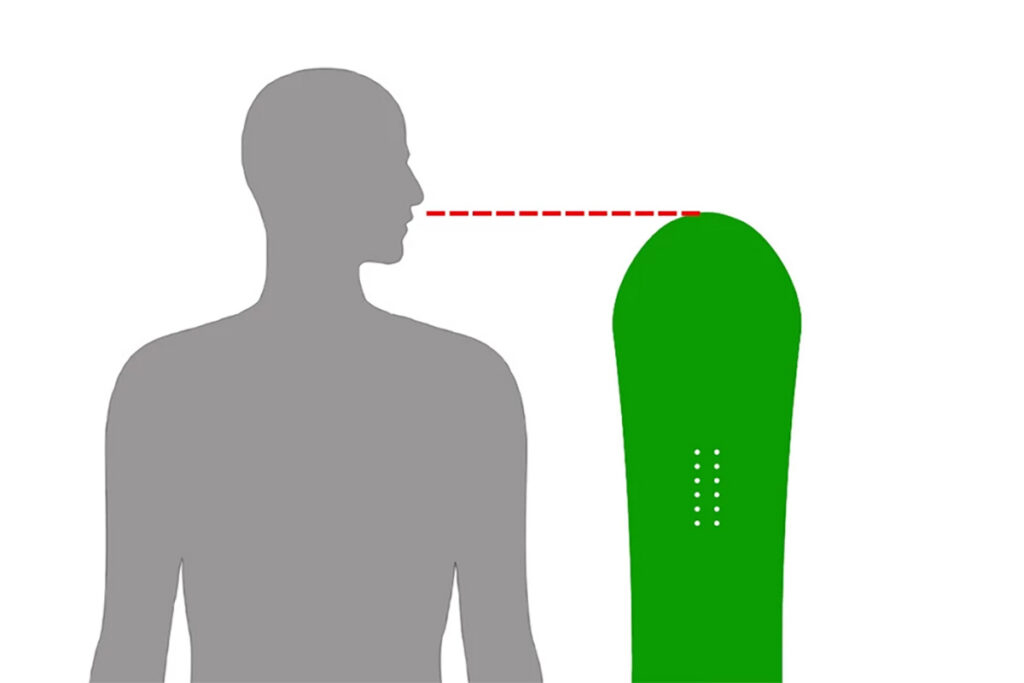
I have found that shorter people typically can handle boards that go past their chins. If you find that you can handle a longer board, this may be better as it creates more stability while riding; however, taller people sometimes need to get boards that go below their chin. The reason for this is because taller people can measure 170 cm up to their chin level. Getting a board that is 170 cm long is typically extremely tall for a board as 165 cm is considered to be one of the largest sizes.
For average height individuals, having a board equal to the height of their mouth is typically what suits them best.
However, those who are higher or lower than the average height will need to consider the length a little more than what is generally said. In fact, many pro snowboarders are generally below average when it comes to height.
Please refer to the “Snowboard sizing chart based on Height and Weight ” below.
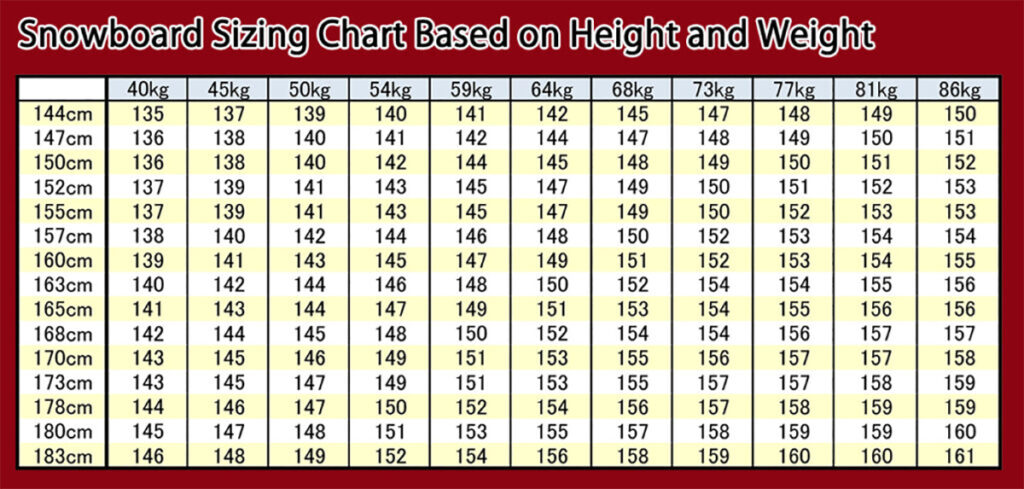
How to choose the length of the board
Long boards increase stability and helps you go faster; however, it is not so agile.
On the contrary, if the board is short, it will be easier to handle, making it suitable for beginners.
Don’t forget to consider the width!
Something else that needs to be put into consideration when choosing a board size is the width. Although this factor is important, it’s not as important as the length of your board.
Despite this, there are still important points to consider–lets get into it!
The wider the board, the more stable it will be. This is a good thing, but if it’s too wide, then the edge switching becomes harder giving you poor control over the board.
On the other hand, a plate with a narrow width will give you less stability. Although this is not what we want, having a more narrow board gives you more control for switching edges. More specifically, edging from the toes to the heel side, and switches from the heel side to the toe side.
Sometimes the width can depend on the length too so make sure to find that perfect balance between the two.
If you don’t have the typical shoe size you have to be especially careful.
For example, if a person with big feet rides on a narrow board, the boots will stick out.
Because of this, some companies will have snowboards with a thicker plate then normal on a regular length board.
See below for pictures of my board and boots to see for reference.
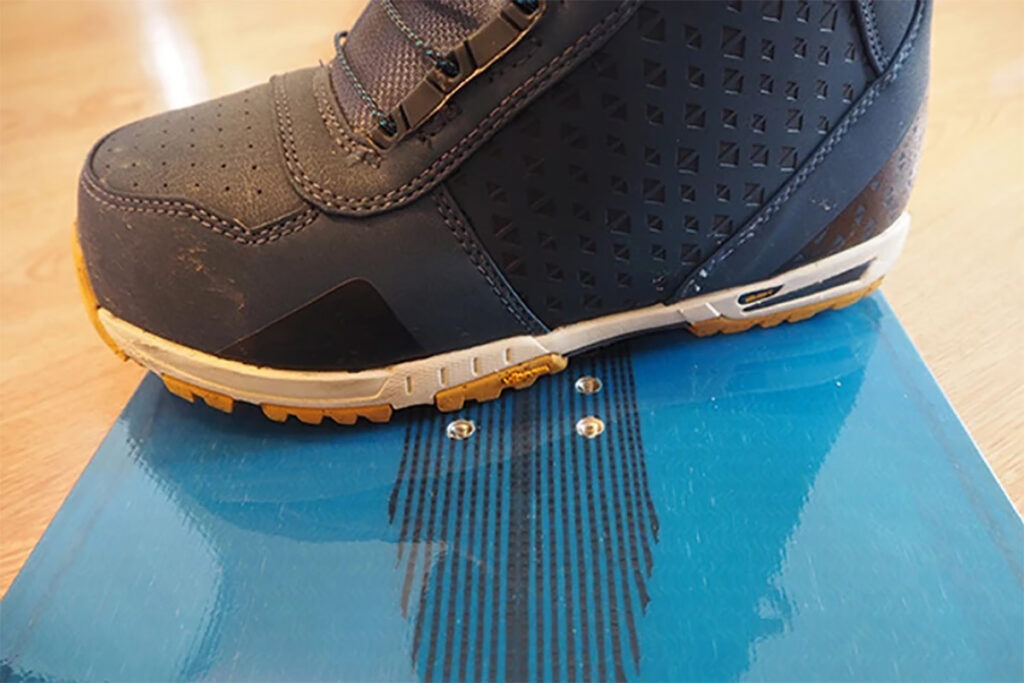
At first glance, it may seem like the boot is too big as it’s just coming off the edges, but in reality, this is exactly what we want. The board may be a little smaller, but this gives the rider more control and easier mobility for turning.
However, if you ride on a board that is too narrow, the toes and heels of your boots may hit the snow when you are turning on your edges. If this happens, you could take a quick tumble due to toe drag/heel drag. You will encounter these problems when you are on a board with with large feet but a narrower width.
Consider a wide board if your foot size is US 10.5 or larger
If you have a large foot size, you may want to choose a board labeled “wide” when selecting a snowboard.
Specifically, those with a size US 10.5 or larger should take this into consideration.
The following picture shows an example of a US 10.5 foot size and choosing a normal board width.
This will still allow you to snowboard with little or no problems. However, because the toes of the feet are sticking out, the board may stand up and the toes may hit the snow if you make a turn that lays your body down aka euro carve.
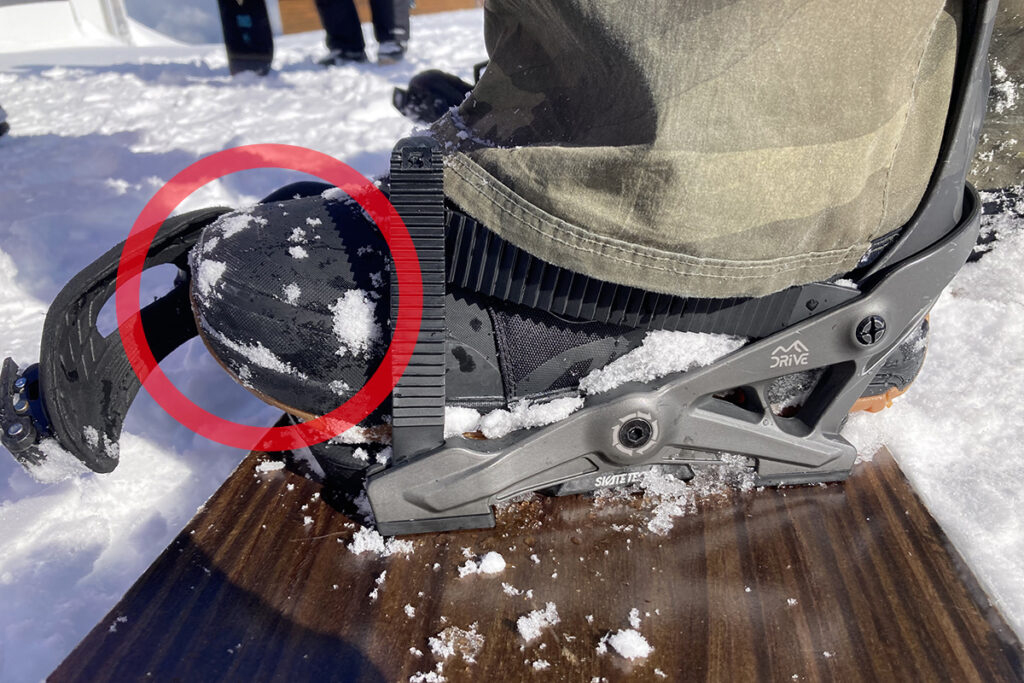
For this reason, boards designed specifically for carving tend to be wider. A well-known brand is Korua Shapes.
Their boards have a wider board width.
Board width review
The wider the board, the more stable it is. The more narrow your board is, the easier it becomes to switch your edging.
Quick tip
A key tip for beginners when choosing the first snowboard is that the lighter the board, the better.
A heavy base is good for stabalization; however, it is very difficult to control for beginners and feels stubborn to turn while riding if you aren’t used to it.
Being a beginner, you shouldn’t even be looking to go as fast as possible, so choose a lighter board when you first hit those slopes–it will make your life much easier!
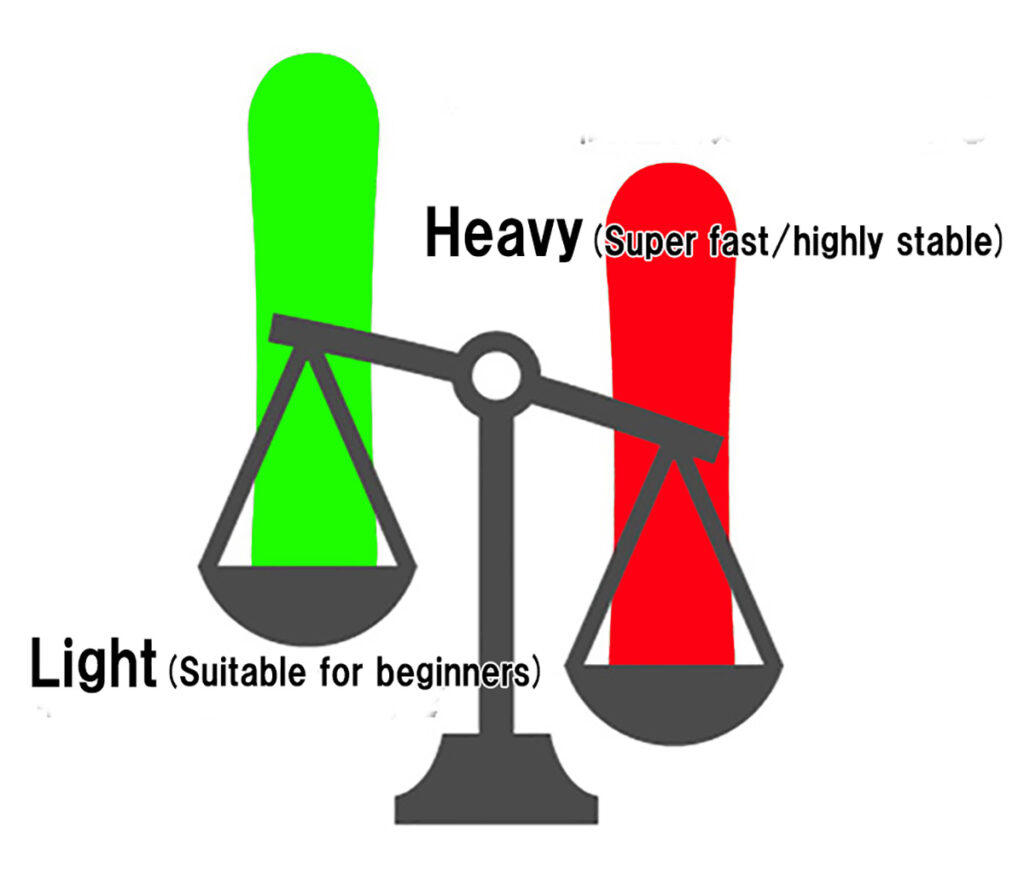
How do you find a light board?
Unfortunately when buying a board, for the majority, the weight is not shown. This being said, it can be a little difficult to tell the difference, but by comparing many boards, you will soon come to realize which boards are lighter than the rest.
Soft boards are good for beginners!
Some snowboards are hard, while others are soft. If you’re a beginner, soft boards are a better option for you. The reason for this is because soft boards are generally easier to control. Hard boards are more suitable for intermediate snowboarders who can carve with ease.
How to check the softness of the board
Grasp the tip of the board firmly with one hand and press the middle part of the board with the other hand.

You may be scared to apply too much pressure as you’re afraid the board is going to break, but snowboards are actually super flexible and can handle more force than you’d expect.
At first, you may not know the hardness of the board by just pressing down on it as you’re quite unfamiliar with the technique; however, once you try this technique on a few boards you should be getting a feel for it as you know what to compare it to.
You may also be surprised how different the flex is between soft and hard boards.
“Practice makes perfect”. This phrase becomes more relevent than ever when checking for board hardness/ softness. Next time you go to a board shop, try this technique!
Summary for hardness of the board
Beginners should choose a soft board that is easy to control!
The stiff boards excels in high-speed situations, but is difficult for beginners to turn.
Prior knowledge: Flex and torsion
There are two main methods for expressing the hardness of a snowboard.
One is “flex”, which expresses the hardness and softness of the board itself.
The other is “torsion”, which expresses the strength of the twist of the board.
Stronger torsion tends to result in stronger edging, making it suitable for carving turns.
You can also jump off a half pipe at high speeds while having stable edges.
Beginners will not think so much about board selection, but let’s remember it as prior knowledge for the future.
There are two types of snowboard shapes
The first kind of shape is the directional shape; directional boards make it easier to keep in one direction. Then there is the twin tip that makes it easy to ride on the tail side (called switch riding).
Next, you look at the board from the side, it’s either a camber with the centre raised, or a rocker with the centre being flat on the ground.
Let’s explain in more detail!
Twin vs. Directional Shape
In a normal stance, the nose is leading and the tail is in the back; however, you can also rotate the board 180 degrees, that’s what we call switch riding.
By riding on both sides, the range in snowboarding skills is being expanded!
No matter how good a snowboarder, they generally don’t snowboard on the switch side as it can feel awkward. Most snowboarders ride in their normal stance 80% of the time as it feels most comfortable. For people like this, I would recommend the directional shape as it offers smoother riding.
Directional shapes are more recommended for beginners as beginners don’t usually feel too comfortable on the board itself, let alone riding on the switch side. So beginners, make your life easier and choose a board with a directional shape.
If you enjoy freestyle tricks and like riding switch frequently, I would recommend the twin size shape. Opposed to the directional shape, the twin shape is equal on both sides, making it much easier to switch sides.
The big difference between the directional shape and the twin-tip s
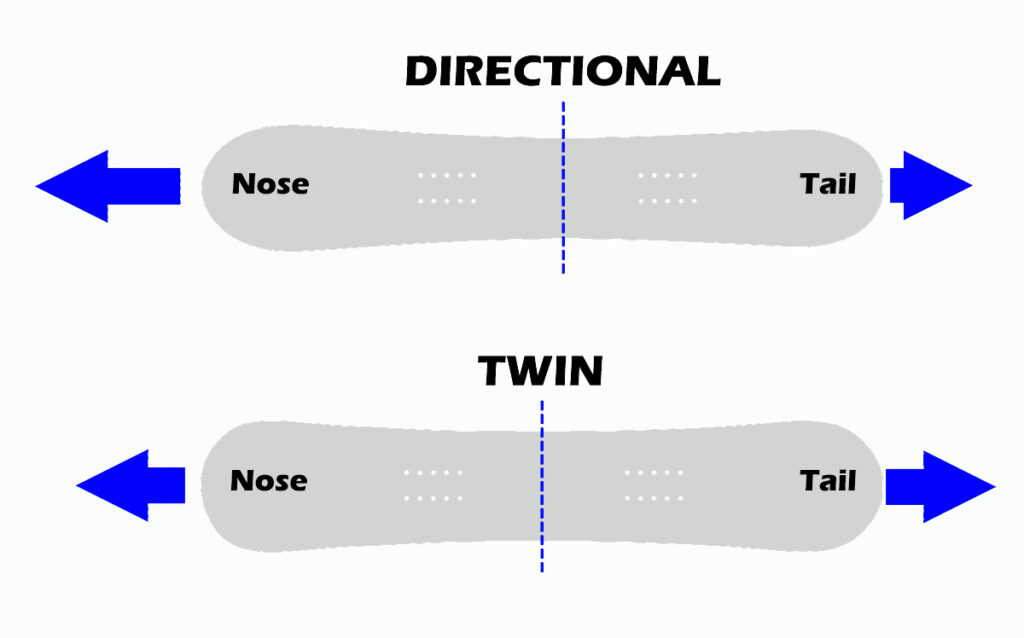
A directional board has a longer tip because the stance is closer to the tail side.
The longer tip of the board increases the stability while riding in normal stance.
The twin-tip board has the stance in the middle, it is easier to switch sides this way; however, it isn’t as stable as the directional board while in normal stance.
Camber vs. Locker vs. Flat
The final step to consider is whether a camber, rocker, or flat suits you better as a rider. These different styles describes the curve of the snowboard when you look at it from the side.
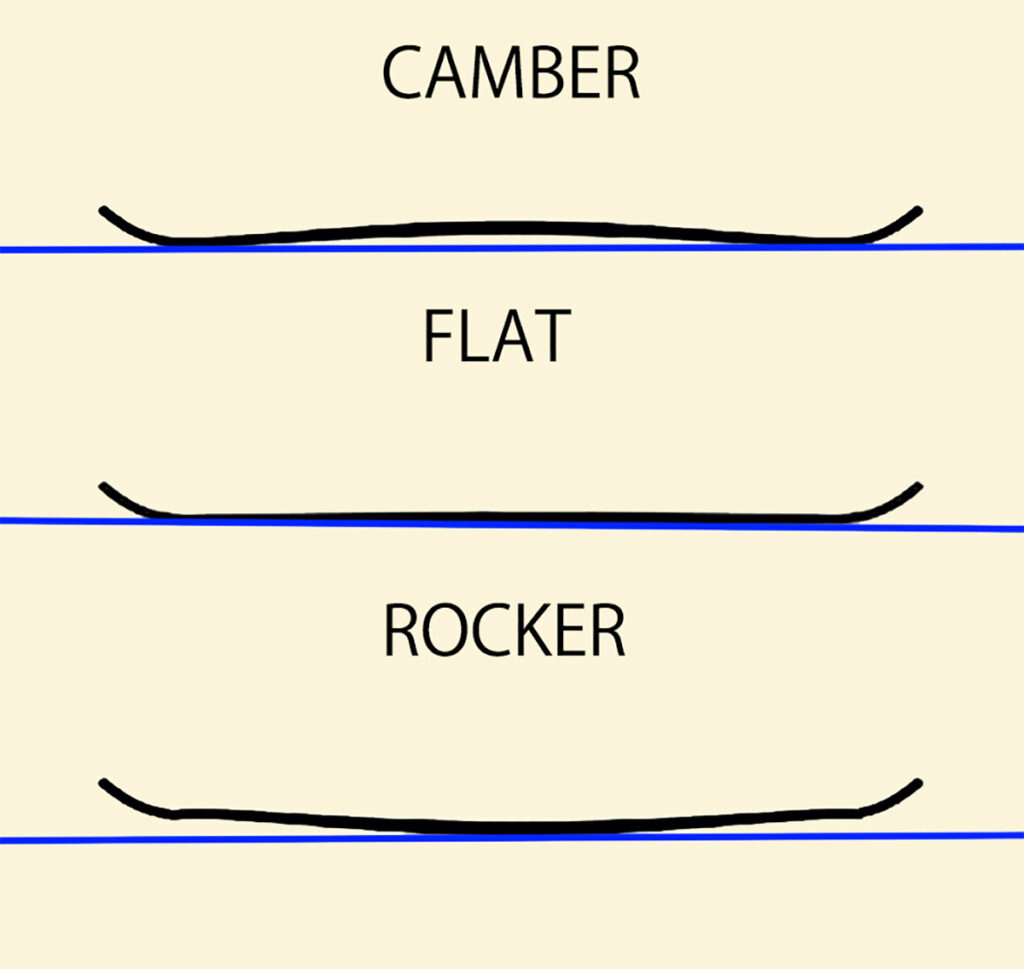
Back in the days, snowboards had only one style, camber with a curved center.
However, over the last 15 years or so, rocker shapes and flat shapes have emerged, expanding the range of snowboards to choose from.
A camber-shaped board allows the snowboarder to be more stable at higher speeds. However, the disadvantage is that the edge is easily caught by beginners.
The rocker shape makes it easier to do tricks on the snow board and helps prevent your edge from getting caught by a rail.
This rocker board was born with the freestyle feeling described above, but it is also suitable for beginners because it’s great in powder and the edges are hard to get caught! Once people started to discover this, it quickly became popular.
On the other hand, the weak point of the rocker shape is that carving turns becomes slightly more challenging as the edges are weak while snowboarding at high speeds. From this came the flat-bottomed board. This is ideal for beginners, as it has a smooth gliding stability. Many shop clerks recommend this board as it’s highly suitable for beginners.
Camber: Excellent speed while riding. Offers strong stability while turning at high speeds and can hold strong edges. One of the more difficult boards to handle; however, once you get used to this style of board, you’ll feel like you’re soaring.
Rocker: Super easy to control while turning. Lifted edges make it easier while riding through powder.
Flat: Ideal for beginners as it offers high stability and gives quicker edge to edge turns. Edges hold and is easier to maneuver than the camber board.
Over the 30 years I’ve been snowboarding, I’ve always thought that even beginners could handle camber; however, after riding the rocker, I was surprised by how easy it is to maneuver it. The rocker would turn where you’d look and the flat board has a significant amount of stability. This being said, I still believe that beginners will be able to handle the camber right away, but if you don’t see yourself needing to use your edges strongly in the near future, maybe stick with one of the alternatives, as they’re easier for beginners to handle.
Hybrid boards have recently become popular! But what are they?
The center part is warped like a camber, and the place where the binding is installed has a rocker shape, and as a result, a double camber has a shape like “W”.
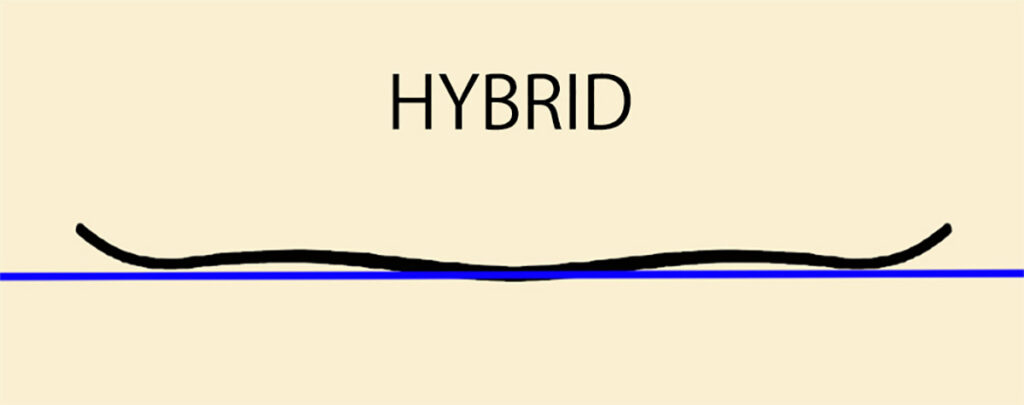
Double camber boards (or hybrid boards) combines the advantages of camber and rocker. It is said to be a magical board ready for any obstacle to come its way; such as carving turns, riding through powder, and even free style boarding. It’s not a lie, but in my option, it’s still not reaching the full capabilities of the rocker and camber boards on their own.
If you’re aiming for strong carving, you’ll want a camber, if you want easy control on turns, you’ll want a rocker. If you want a bit of everything, the hybrid may be a good suit for you as it can adapt to any style, and it’s this new idea that is making the hybrid board more popular than ever.
Summary
First, think about the length of the board that suits your height and weight.
Those who want high-speed stability in the future should consider a longer board.
Next step, choose either directional or twin tips.
A camber board may be suitable for long term when you want to go faster, but a flatter board is easier for beginners.
Once you’ve decided up to this point, you can also think about your graphic design preferences. I haven’t introduced this idea yet, but it’s a good idea to have a design that suits you because it makes you cherish your board more!
It would be even better if the board you choose is from a reliable manufacturer.
Well-known board brands include: Burton, Nitro, K2, and Salomon.
Once you have selected some candidate boards, let’s go to the shop!
Let’s check the weight. Let’s check the hardness.
After, make sure that the board width matches your foot size.
In addition, think about whether the design suits you.
The snowboard shop is also a fun space for snowboarders. Staff are usually super helpful and know which board will suit you best; now, you can also choose which board suits you best from all the knowledge you’ve learned!
Last message
Many snowboard beginners tend to choose the board first, but boots are the most important part of snowboard gear.
Please also check the links below.
https://snowboardtips.net/how-to-choose-snowboard-boots
My favorite snowboard brand
My favorite snowboard is the Canadian brand Endeavor Snowboards. It’s a very good board for freeriding and freestyle, so if you’re interested, please check it out.
https://endeavorsnowboards.com/
